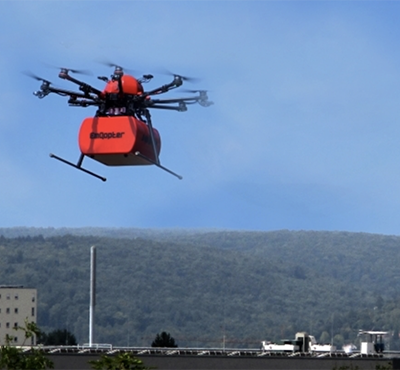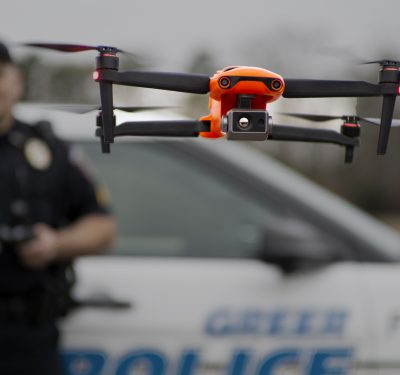 The Bell Autonomous Pod Transport (APT) 70 successfully executed a beyond visual line of sight (BVLOS) mission in an urban environment during a joint flight demonstration with NASA.
The Bell Autonomous Pod Transport (APT) 70 successfully executed a beyond visual line of sight (BVLOS) mission in an urban environment during a joint flight demonstration with NASA.
Bell was selected to participate in NASA’s Systems Integration and Operationalization (SIO) activity in 2018, which includes multiple flight demonstrations that focus on different types of UAS and their flight environments, according to a news release. During this SIO demonstration, the UAS transitioned in and out of Class B airspace to represent future commercial flights.
Results from the test will be used to evaluate and demonstrate detect and avoid (DAA) and command and control (C2) technologies for use in future certified operations in controlled and uncontrolled airspace. Data collected will be used to support future standards development and FAA certification guidelines.
The APT 70 was launched from Bell’s Floyd Carlson field in Fort Worth, Texas, to fly a preprogrammed 10-mile circuit path along Trinity River. The UAS took off vertically and then rotated to quietly fly on its wings. It flew at an altitude of 500 feet above ground level, traveling a route that included road crossing and transitioning out of Class B airspace. Communication between the drone and the ground station was maintained through a redundant datalink.
A prototype airborne detect and avoid system and visual observer provided the remote pilot with air traffic awareness and recommended flight maneuvers.
Other demonstration partners include Xwing and the University of Massachusetts Amherst’s Center for Collaborative Adaptive Sensing of the Atmosphere (CASA). Xwing’s multi-sensing detect and avoid system was integrated into the aircraft. It’s made up of radars, ADS-B, visual system and onboard processing to provide aircraft tracks and pilot alerts that are transmitted to the ground station.
The vehicle also features CASA’s integrated display that provides pilots with local weather risks and route-based weather alerts issued by the City Warn Hazard Notification System deployed in the Dallas–Fort Worth metroplex.
The APT 70 one day could provide fast, reliable transport for payloads of up to 70 pounds. It is estimated to travel three times faster than ground transportation and is capable of autonomous flight. Medical deliveries, third-party logistics, offshore delivery, and humanitarian relief are among potential uses.
“This successful demonstration highlights the great potential for the APT 70 to complete complex missions for businesses and health care providers,” said Michael Thacker, executive vice president for innovation and commercial business, according to the release. “With teammates like NASA, we can carve a path forward for future commercial operations to solve the cargo and goods transportation challenges our world currently faces.”






